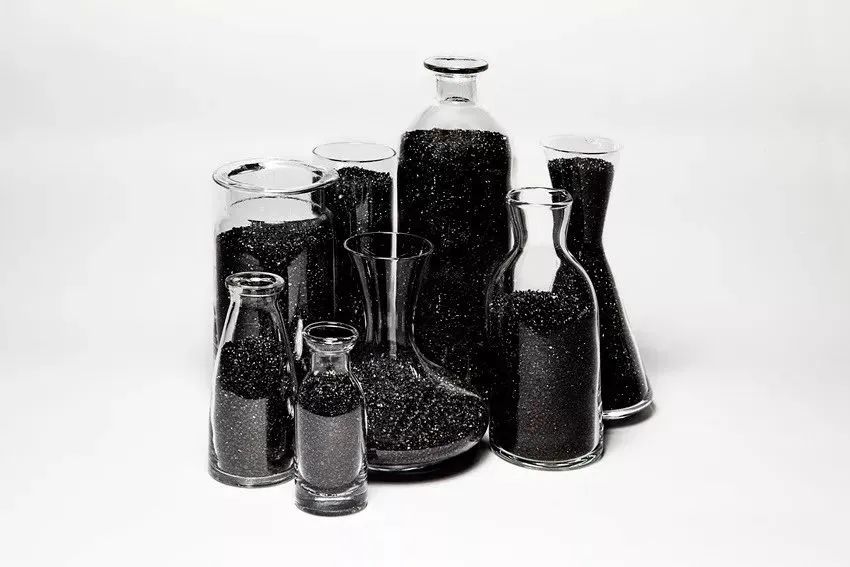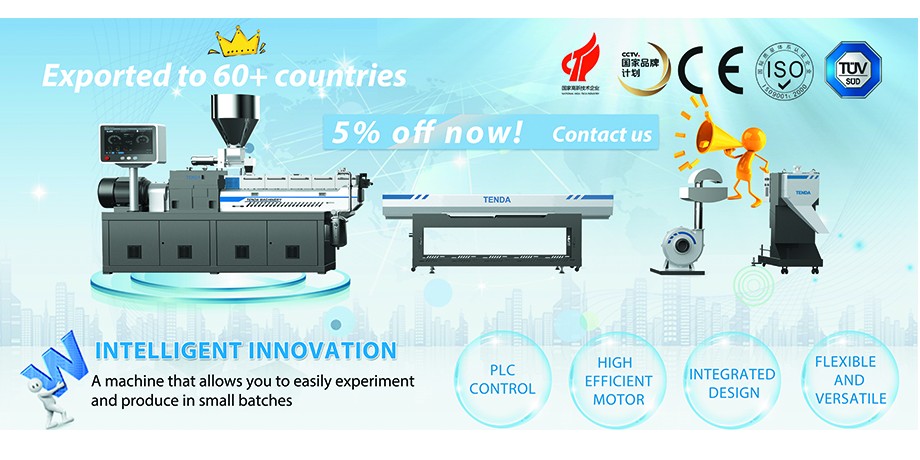The color of the product can attract customers and give the product a different kind of added value. People distinguish gray into 50 levels. However, many people think that black is the darkest color. Such customers have put forward higher requirements for color matching personnel and masterbatch manufacturers of modification enterprises.
Deep black plastics have gained a reputation in recent years, and plastic formulators are looking for increasing levels of blackness in their end products. Deep blacks are becoming more prominent in the auto industry, especially as black interiors are getting darker. Where did the black come from?
1. Carbon black: the black of the black
The black stuff around us most likely contains carbon black. Carbon black is a highly engineered microscopic form of carbon. It is found in our clothes, wires, printing inks, rubber products, tires and all types of black plastic. In addition to imparting black color, carbon black can improve product performance. It can be used to increase the conductivity of materials and protect products from environmental stresses such as degradation caused by UV light.

The black color in plastics can be attributed to the presence of carbon black, so calling for a deeper black requires understanding what it does. Deep blacks are said to have more blackness, a complex result of a number of factors:
• Surface area
•structure
• The degree of dispersion of carbon black
Therefore, choosing the correct carbon black is the most important for the production of black plastic with high blackness. Manufacturers must select a carbon black for a specific designed high-value application, and a suitable carbon black needs to deliver the properties and performance benefits of higher blackness.
2. The recipe method to make black darker
A balance must be maintained between the competing goals of plastic formulation. Blackness, mechanical properties and cost-effectiveness must be carefully balanced. For a durable black plastic formulation, the following interrelated factors must be considered:
• Particle size and structure
• Surface area
• UV stability/protection
• Good dispersibility and/or ease of masterbatch dilution
• Excellent surface smoothness
• Physical and chemical cleanability
• Polymer compatibility
(1)Particle size and structure
Particle size is a fundamental property that affects carbon black performance. Smaller particles absorb more visible light, which in turn results in greater blackness. Smaller particles also improve weatherability and increase electrical conductivity.
On the other hand, small particles increase viscosity. A more highly branched agglomerate structure is relatively easier to disperse, but also results in higher viscosity.

(2) Surface area
Another important property, also closely related to particle size, is surface area. Smaller particles have a smaller surface area per unit of carbon black. If carbon black has a higher surface area, it can use lower additions to achieve the required blackness.
The higher surface area also means that the carbon black has a finer fineness, and finer carbon blacks generally cost more, however, the additions are also lower. Lower additions can offset higher costs, resulting in the most economical solution. Carbon blacks with high surface areas require the use of higher mixing energies for enhanced dispersion.
(3)UV stability/protection
Plastic parts that endure long-term sun exposure can absorb ultraviolet (UV) radiation. UV radiation can cause color changes, mechanical degradation and chalking. Carbon black absorbs some UV radiation and dissipates it as heat, thereby helping to protect the polymer.
The addition of suitable UV stabilizers can further increase the weatherability of the polymer. UV resistance ensures that blackness can be maintained for longer in harsh conditions.
(4)Easy to disperse or simple masterbatch dilution
Incomplete dispersion results in the formation of carbon black agglomerates on the micrometer scale. The presence of agglomerates means that the carbon black particles are not completely separated and the full coloring potential is not realized. Manufacturers often increase the amount of carbon black added to make up for the lack of color strength. These aggregates also act as entrapments that deteriorate the mechanical properties of the polymer system.
When blending, choose carbon black with good dispersibility. When using masterbatch, ensure good dilutability to achieve uniform pigment dispersion.
(5) Physical and chemical purity
Using the correct amount of carbon black and dispersing it well is completely futile if the carbon black contains a lot of physical impurities. Low levels of impurities are unavoidable in carbon black due to the presence of residues in carbon black. However, residue levels must be controlled to a few ppm. In order to achieve high blackness, make sure that the residual concentration of carbon black is below 20ppm.
Dispersion is also affected by the salt in the carbon black. The goal is that low ash carbon black should be used. Store carbon black in a clean, dry and dust-free environment to avoid contamination.
(6) Excellent surface flatness
Surface smoothness is closely related to both dispersibility and physical purity. Evenly dispersed pigments exhibit a smooth surface appearance which helps improve the black appearance of polymer products. Using carbon black with very low residues helps prevent surface defects caused by the resulting inclusions.
(7) Polymer compatibility
Always make sure that the carbon black you choose is compatible with your polymer system. Common grades are compatible with all common polymers, but may not provide the high performance in specific applications. Specialty grades provide excellent performance in such applications. Consult the carbon black manufacturer about whether a certain grade is suitable for your formulation.
3. Carbon Black Addition: Direct Blend or Masterbatch?
Typical plastic formulations include thermoplastic polymers mixed with various additives. The choice of a polymer such as PC, PA, PE or ABS depends on the desired mechanical properties and end application. Additives improve the physical and chemical properties of the matrix resin. Commonly used additives include:
• Antioxidants
• UV-stabilizer
•pigment
Additives impart specific physical and chemical properties to plastics. Plastic blending is the process of mixing polymers with additives in the molten state and giving sufficient shear. Mixing occurs as the polymer is dosed through the feeder and hopper.
An alternative to plastic blending is to use masterbatches. A masterbatch is a concentrate of pigments and additives added to a carrier. The carrier resin is filled with pigments and additives during heating, then cooled and cut into pellets. In use, the masterbatch and matrix resin particles are premixed as they are fed into the extruder. Final mixing is carried out by the screw of the extruder.
Masterbatches allow plastic processors to economically color raw polymers with greater uniformity. Plastic blending processes are prone to colorant agglomeration and insufficient dispersion. Masterbatches help processors deal with these issues. The use of masterbatches also helps reduce inventory, as fewer grades of polymer need to be stored.

4. The right choice of carbon black
Carbon black must be uniformly dispersed in the polymer to avoid occlusion formation. Occlusions may sacrifice the mechanical properties of the final product. Undispersed agglomerates can also cause surface chalking, which reduces gloss and blackness of the plastic. Masterbatch is the best way to achieve uniform dispersion. High energy mixing in a twin screw extruder will help to uniformly disperse the masterbatch in the matrix polymer.
An alternative way to avoid high mixing is to use a carbon black with a more branched agglomerate structure. A branched agglomerate structure can be identified by the absorption number (OAN).
5. 14 common senses to pay attention to when Tengda extruder safety production
(1)Before starting the Tengda twin-screw extruder, check whether there are foreign objects in the barrel of the twin-screw extruder, up and down the hopper and inside, whether the fastening bolts of various parts are loose, whether the safety cover is firm, and whether the position of each button switch is correct. , And use the thermometer to pass the cooling water and other methods to detect whether the temperature control is sensitive, whether the instrument is out of order, and whether the cooling water circuit is unblocked, etc.
(2)Then add enough lubricating oil to each lubricating part
(3)Do a good job of cleaning and sanitation of Tengda twin-screw extruder
(4)According to the operation scale of Tengda twin-screw extruder, heat the screw, barrel and die head of the extruder. After the temperature rises to the set temperature, it must be kept warm for about ten minutes before it can be turned on.
When the temperature of each part of the Tengda twin-screw extruder tends to be stable and is ready to start, notify the staff around the equipment
(5)Before starting the Tengda twin-screw extruder, the connecting screws and bolts of each part of the die must be tightened while hot. Before the material is extruded, the operator must not stand in front of the die to prevent damage to the bolts or screws. ACCIDENT
(6)Start at low speed to drive the screw of Tengda extruder to rotate. Use the motor to check whether the pointer of the working ammeter of the main motor swings normally.
If there is abnormal noise in the work of the Tengda extruder or the screw is not running smoothly, you should stop the machine immediately, and then ask the relevant personnel for maintenance.
(7)The test run of the screw should not exceed 30 minutes. When everything is normal, connect the die head and the pelletizing equipment, and then use the connecting bolts when installing the die head. Before use, a layer of aluminum disulfide or silicone oil should be applied to facilitate disassembly.
(8)In the early stage of feeding production, the screw should use the lowest working speed, and the feeding should be less and uniform. We should also check whether the pointer of the working ammeter of the motor used to drive the screw rotates to swing abnormally at any time.
(9)After the Tengda extruder is put into normal production, the operator should always check the temperature change of the bearing part. When checking the temperature of the motor and the bearing part, he should touch the inspection part with the back of his finger lightly.
(10)Do not touch any rotating parts with your hands during the operation of the equipment. When disassembling and installing the screw and mold, do not directly hammer the parts with a heavy hammer.
(11)When cleaning the residual material on the screw, machine and mold of Tengda extruder, it must be cleaned with a bamboo or copper knife brush. Avoid scraping the residual material with a steel knife or continuously grilling the parts with fire. It can also be cleaned with a special screw cleaning material. Do not disassemble, wash and clean. When the Tengda extruder fails, the Tengda extruder cannot be driven, the screw of the Tengda extruder rotates, and the operator cannot face the extruder barrel when adjusting the mold, which can prevent accidents from happening.
(12)When the extruder is in production, the operator is not allowed to leave the post. If he must leave, the Tengda extruder must be stopped.
(13)After the Tengda extruder is stopped, disassemble the screw. After cleaning the residual material, apply a layer of anti-rust oil. If it is not used temporarily, it should be wrapped and hung vertically in a dry and ventilated place.
(14)Extruders and accessories that have been out of production for a long time should be coated with anti-rust oil and sealed with an inlet and outlet hole, which can prevent foreign matter from entering

6. Instructions for the operation of 9 kinds of raw materials when they are shut down
(1)PS, SAN, because the thermal stability of hard glue is good, it will not decompose under a certain temperature for a long time, so just turn off the heat before shutting down.
(2)The thermal stability of the ABS compound is also good, and there is no need to push out and clean the remaining compound in the barrel when the machine is shut down.
(3)The thermal stability of the PE compound is very good, and it will not decompose after being heated for a long time in the barrel, so there is no need to push out the remaining compound in the barrel when the machine is shut down.
(4)PP and PE are similar, but slightly less thermally stable than PE
(5)If the production of PC is temporarily stopped, it is necessary to keep the barrel at 30 °C to prevent the rubber from getting wet. If the material needs to be changed, PE needs to clean the barrel, and take out the screw from the hot barrel, and use a copper wire brush to clean the screw.
(6)PVC is a heat-sensitive rubber compound. Before stopping the machine, first turn off the electric heating, and then push out the PVC until the temperature of the barrel drops to 150°C, and then use another rubber compound with better thermal stability to push out all the rubber material in the barrel.
(7)Although PMMA is easy to thermally decompose at high temperature, its thermal stability is still good at normal temperature, so it is only necessary to turn off the electric heater when shutting down.
(8)The thermal stability of PA glue is still good. There is no need to clean the barrel or push the material clean when the machine is shut down, but the electric heating needs to be turned off immediately, otherwise the glue will be easily damaged after 15 minutes.
(9)POM is heat-sensitive. When the machine is stopped, the pressure should be adjusted to zero within ten minutes before the electric heater is turned off. After continuous injection, the material in the cylinder is pushed out.